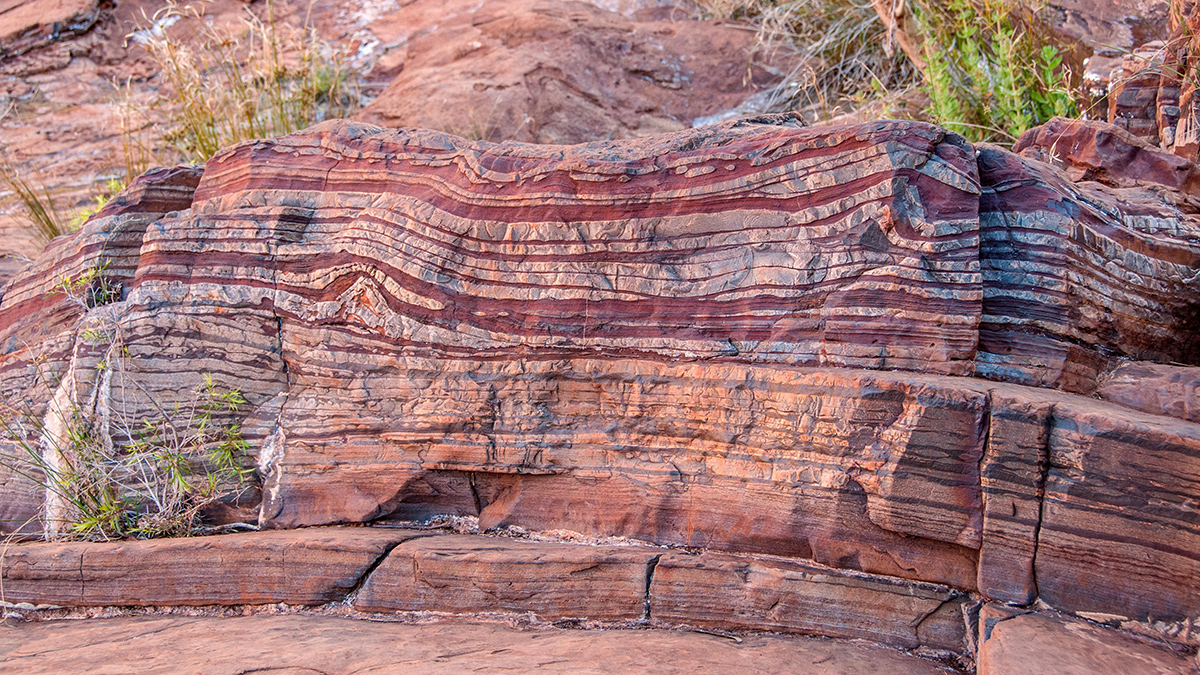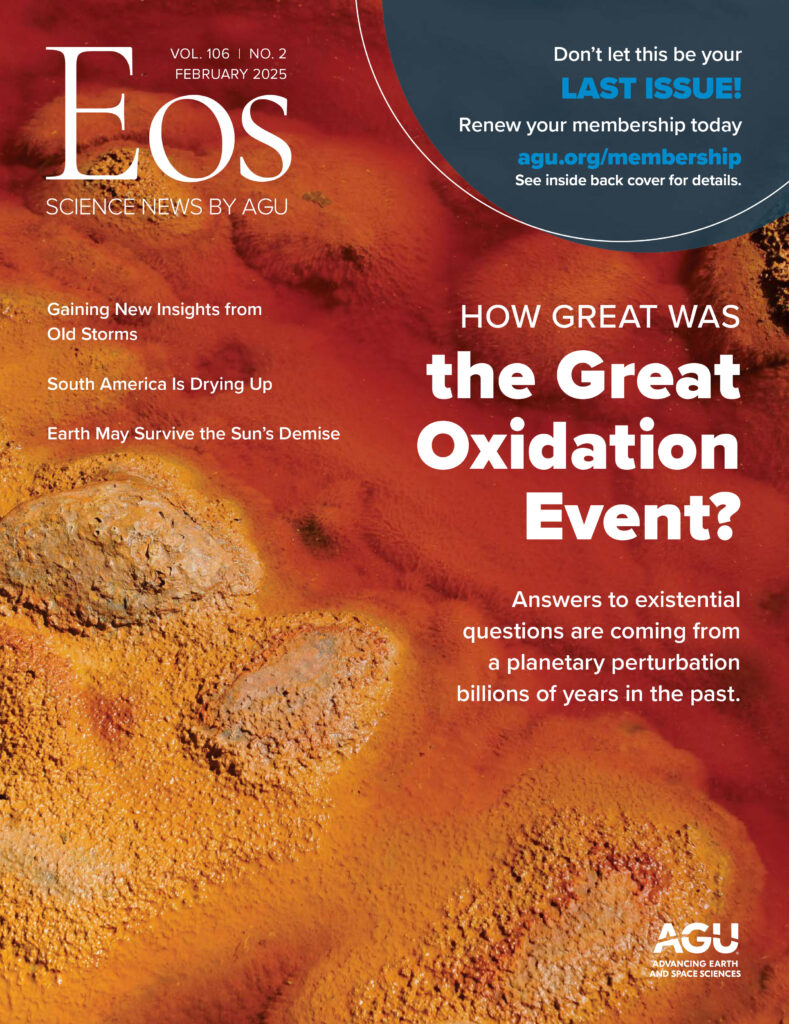Banded iron formations (BIFs) are striking, red-hued sedimentary rocks that contain alternating layers of iron and chert. They are relics of Earth’s early history, thought to have formed when microbes oxidized iron in the ancient oceans, causing it to precipitate as iron ore. A new study published in Nature Geoscience shows that different strains of bacteria may have competed for the iron, with some strains using poisonous gases to get the better of their competitors.
“The study shows how microbial community dynamics may have affected BIF precipitation in ways that are previously unrecognized,” said Leslie Robbins, a geobiologist at the University of Regina in Canada who was not involved in the research.
Most BIFs are more than 1.8 billion years old. They appeared in the greatest abundance near the end of the Archean eon, 2.5 billion years ago. At that time, conditions on Earth were drastically different from today.
“Most of the time in laboratory studies, a single microbial strain or a small group are studied. In reality, though, we know that microbial communities are much more complex.”
“The main difference is oxygen,” explained Casey Bryce, a geobiologist at the University of Bristol and a coauthor of the study. In the Archean, the oceans and atmosphere contained almost no oxygen. That’s what makes BIFs so intriguing. Today, iron that is in contact with air or water oxidizes rapidly to rust. But scientists need another explanation for oxidized iron in the oxygen-poor Archean.
According to current understanding, a group of microbes called photoferrotrophs played a major role in BIF deposition. Photoferrotrophs floated in the shallow waters of Archean oceans, where they oxidized iron with the help of sunlight. The iron then sank to the seafloor, over time building layers of oxidized iron up to 900 meters (3,000 feet) thick.
But researchers aren’t certain whether other kinds of bacteria were involved in BIF formation and how they interacted with photoferrotrophs. “Most of the time in laboratory studies, a single microbial strain or a small group are studied. In reality, though, we know that microbial communities are much more complex,” Robbins said.
The new study’s authors aimed to explore this complexity. “We designed a study to look at competition between two different types of anaerobic iron-oxidizing bacteria who should be in direct competition for iron,” Bryce said. Their experiments pitted photoferrotrophs against nitrate-reducing bacteria, which react iron with nitrate.
“We expected one to be faster, but not that one of them would poison the other.”
To test which strains were most successful at snatching up iron, the scientists cultivated these two types of bacteria both together and in separate vials. They found that photoferrotrophs failed to grow when they were cultivated with nitrate-reducing bacteria, suggesting that nitrate reducers were outcompeting photoferrotrophs for the available iron.
But the photoferrotrophs in the mixed culture were not only losing the struggle for iron—they were also dying more rapidly than expected. The researchers traced the die-off to a microbial chemical weapon: The nitrate-reducing bacteria in the culture were producing nitric oxide, which poisoned the photoferrotrophs.
“We expected one to be faster, but not that one of them would poison the other,” Bryce said. “We had worked with the ‘winning’ bacteria for many years and had no idea it produced this toxin.”
A Supporting Role for Nitrate Reducers
The study raises the possibility that nitrate-reducing bacteria played a supporting role in BIF formation. Photoferrotrophs may have driven iron oxidation in the shallow ocean for much of the Archean, but struggled as the ocean’s chemistry changed.
Photosynthetic cyanobacteria started to colonize shallow coastal waters, exhaling oxygen and possibly pushing oxygen-shy photoferrotrophs offshore. In the open ocean, photoferrotrophs had limited access to nutrients flushed into the ocean by rivers. This lack of nutrients likely limited their ability to oxidize iron.
Nitrate-reducing bacteria may have increased the pressure on photoferrotrophs by producing toxic nitric oxide. As photoferrotrophs were increasingly stifled, nitrate reducers could have flourished and continued forming BIFs.
Robbins pointed out that further research is needed to show how complicated bacterial communities affected iron oxidation in the Archean. “I think there is a lot to still be learned,” he said. “Studies like this one may yield further insights into how BIFs formed.”
—Caroline Hasler (@carbonbasedcary), Science Writer


